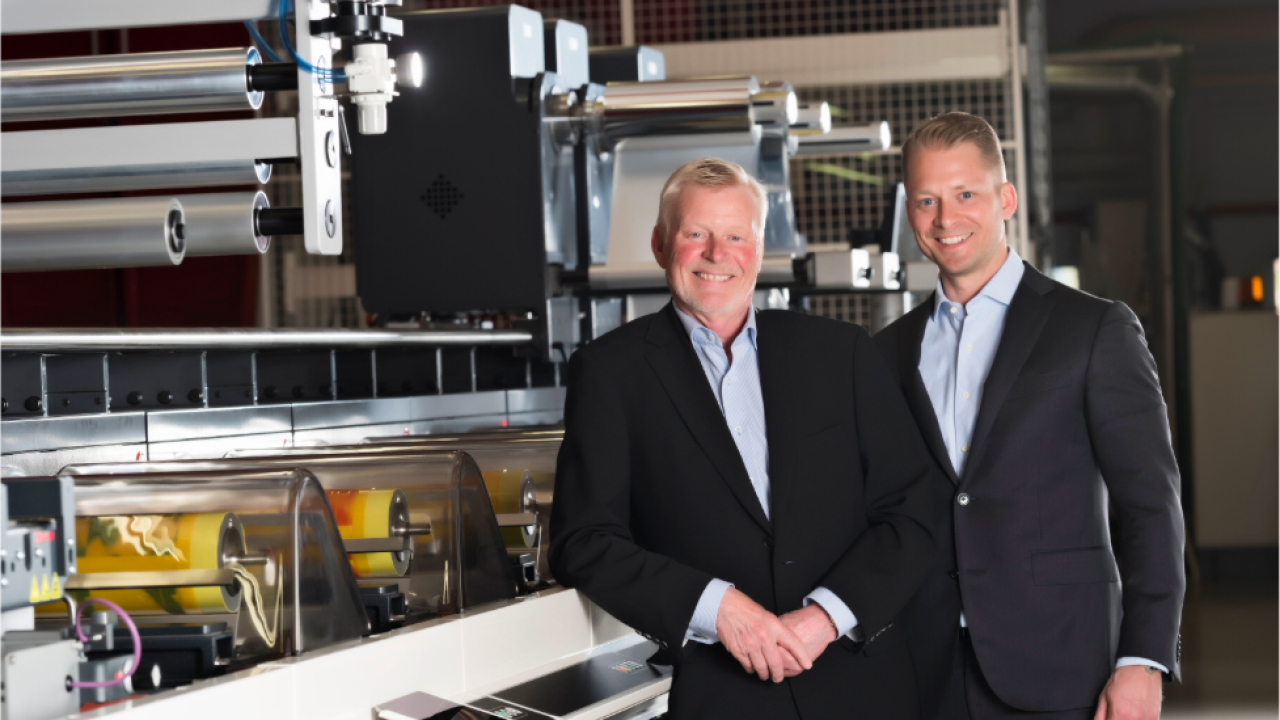Forty years of flexo

Nilpeter introduced its first in-line flexo press in the late 1970s. At this time, the ink system was either water- or solvent-based.
The press manufacturer’s in-line UV letterpress was introduced in the beginning of the 1980s, and both technologies had advantages over the other. Flexo was less expensive, had digital color change (anilox), simpler print setting, and lower web tensions. However, the UV letterpress had finer screen (less transfer point and harder plates), instant ink curing, analogue color control, constant color strength, and fewer wash-ups.
The press manufacturer’s in-line UV letterpress was introduced in the beginning of the 1980s, and both technologies had advantages over the other. Flexo was less expensive, had digital color change (anilox), simpler print setting, and lower web tensions. However, the UV letterpress had finer screen (less transfer point and harder plates), instant ink curing, analogue color control, constant color strength, and fewer wash-ups.
In the beginning of the 1990s, the developments of printing plates, anilox rollers and ink for UV flexo had reached a point where the difference in print quality between the two technologies became smaller and smaller.
In the mid-1990s, the ongoing development in UV flexo had reached a point where about 10 percent of the flexo presses were equipped for printing UV flexo. During the next decade, the number of flexo presses equipped for UV printing raised to 90 percent of presses built.
During that same period, the demand for new UV letterpress machines was reduced, and Nilpeter’s product line was discontinued due to the competition from UV flexo and from in-line UV offset.
Servo drives were first used in Nilpeter flexo presses in the mid 2000s. At this time, the servo drives replaced main shaft and bevel gears which were a weak point (due to their vibrations, for example) in flexo printing.
Servo drives
In later press designs, servo drives have replaced not only main shaft and bevel gears but also format gears. This printhead design with servo drive and steering by wire has brought the level of automation to a point where job settings can be stored and reloaded with an accuracy which brings the need for operator adjustments to a minimum.
We now see ongoing developments in plate and anilox technology, which will increase predictability of printing quality to a level where the differences between flexo and offset is reduced.
Another important point in the future is the current development in curing technology and inks.
Today, the need for stability and accuracy of the press mechanics are pivotal if the benefits of the electronic controls are to be fully exploited. There is no advantage to storing hundreds of positions of the moving parts if the flexo press platform itself isn’t accurate.
Nilpeter has chosen to invest in in-house manufacturing of parts to control the quality, stability, and accuracy across the product lines. This is the way forward to exploit new technologies such as artificial intelligence, the Internet of Things and remote diagnostics for instant support.
Stay up to date
Subscribe to the free Label News newsletter and receive the latest content every week. We'll never share your email address.

